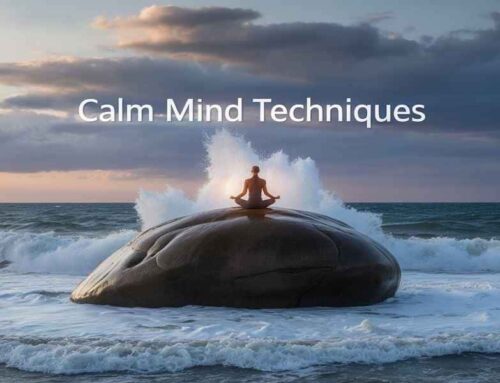
Biohacking for Business Leaders
In today’s fast-paced world, where every minute counts, the quest for optimal performance and productivity has never been more crucial. Business leaders are constantly seeking innovative approaches to outpace competition and maximize their potential.
Enter Biohacking – a revolutionary practice that combines biology, science and self-experimentation to enhance one’s physical and mental capabilities. This article delves deep into the realm of biohacking, exploring practical strategies and techniques that business leaders can adopt to boost performance and productivity.
Understanding Biohacking: A Primer
Biohacking is a comprehensive approach to self-improvement that involves making small, iterative changes to one’s lifestyle, biology and environment to gain control over bodily processes. Often, it includes the use of cutting-edge technology, dietary adjustments, supplements and various forms of physical and mental training. The goal? Achieving peak performance, better health and greater productivity.
The term “Biohacking” might evoke images of futuristic tech and high-tech gadgets, but at its core, it’s about making informed choices based on scientific research to optimize how your body and mind function.
Key Areas of Biohacking for Business Leaders
- Mental Clarity and Cognitive Enhancement
- Physical Health and Stamina
- Sleep Optimization
- Diet and Nutrition
- Stress Management and Emotional Resilience
Let’s break down each of these areas and explore specific biohacks that business leaders can incorporate into their daily routines.
Mental Clarity and Cognitive Enhancement
- Nootropics and Cognitive Supplements:Nootropics, often referred to as “smart drugs,” are supplements known to enhance brain function. Commonly used nootropics include caffeine, L-theanine and more complex compounds like racetams and modafinil. These supplements can improve concentration, memory and overall mental agility, benefiting leaders who need to stay sharp throughout the day.
Implementation Tip: Start with natural nootropics like caffeine in combination with L-theanine, which promotes relaxation without drowsiness. As you get comfortable, explore more advanced nootropics under the guidance of a healthcare professional.
- Mindfulness and Meditation:Mindfulness practices and meditation can significantly enhance mental clarity and focus. Techniques like focused breathing, guided meditation and mindfulness exercises help reduce stress and improve concentration.
Implementation Tip: Incorporate a 10-minute mindfulness session in the morning or during a midday break. Use apps like Headspace or Calm to guide your practice if you’re new to meditation.
Physical Health and Stamina
- Regular Exercise:Physical activity is vital for maintaining energy levels and overall health. Exercise boosts mood, decreases the risk of chronic diseases and enhances brain function by increasing the flow of oxygen-rich blood to the brain.
Implementation Tip: Incorporate a mix of aerobic exercises (like running or cycling), strength training and flexibility movements like yoga. Aim for at least 150 minutes of moderate aerobic activity or 75 minutes of vigorous activity each week, complemented by muscle-strengthening exercises on 2 or more days a week.
- High-Intensity Interval Training (HIIT):HIIT workouts involve short bursts of intense exercise alternated with low-intensity recovery periods. This time-efficient practice keeps you fit and energized without demanding extensive periods out of your busy schedule.
Implementation Tip: Try a 20-minute HIIT session consisting of exercises like sprinting, burpees, jump squats and push-ups. HIIT workouts can be easily tailored to fit into a lunch break or early morning routine.
Sleep Optimization
- Consistent Sleep Schedule:Maintaining a regular sleep schedule is crucial for cognitive function, mood regulation and overall health. This consistency helps regulate the body’s internal clock, improving the quality of sleep.
Implementation Tip: Aim to go to bed and wake up at the same time every day, even on weekends. Use tools like bedtime reminders and sleep tracking apps to monitor your sleep patterns and optimize your schedule.
- Blue Light Management:Exposure to blue light from screens can disrupt sleep patterns by inhibiting the production of melatonin, a hormone that regulates sleep.
Implementation Tip: Use blue light blocking glasses, install apps that filter blue light on your devices or switch to warmer lighting in the evening. Aim to power down electronic devices at least 30 minutes before bedtime.
Diet and Nutrition
- Intermittent Fasting:Intermittent fasting (IF) involves cycling between periods of eating and fasting. This practice can boost metabolism, enhance cognitive function and improve overall health.
Implementation Tip: Start with a simple 16/8 method—fast for 16 hours and eat within an 8-hour window. Adjust the timing based on your schedule and comfort level.
- Ketogenic Diet:The ketogenic diet, high in fats and low in carbohydrates, puts your body into a metabolic state called ketosis, where fat is burned for energy instead of glucose. This shift can enhance mental clarity, reduce brain fog and maintain steady energy levels.
Implementation Tip: Incorporate foods like avocados, nuts, seeds and healthy oils into your diet while reducing carbohydrate intake from sources such as bread, pasta and sugary foods. Monitor your progress and consider consulting with a nutritionist to ensure it suits your individual needs.
- Nutrient-Dense Foods:Eating a diet rich in vitamins, minerals and other essential nutrients ensures that the body and brain function optimally. Emphasis should be placed on whole foods like fruits, vegetables, lean proteins and whole grains.
Implementation Tip: Prepare balanced meals or consult meal planning apps to ensure you get a variety of nutrients. Incorporate “superfoods” like berries, leafy greens and fatty fish (such as salmon) to boost overall health and cognitive function.
Stress Management and Emotional Resilience
- Adaptogens:Adaptogens are natural substances that help the body adapt to stress and exert a normalizing effect upon physiological processes. Common adaptogens include ashwagandha, rhodiola rosea and ginseng.
Implementation Tip: Introduce adaptogens into your routine via teas, supplements or meal replacements. Start with one adaptogen and observe any changes in stress levels and overall well-being before combining different adaptogens.
- Breathing Techniques:Deep-breathing exercises can activate the body’s parasympathetic nervous system, promoting relaxation and reducing the stress response. Techniques such as diaphragmatic breathing, box breathing and the 4-7-8 method are particularly effective.
Implementation Tip: Practice deep-breathing exercises during short breaks throughout the day. For example, the 4-7-8 method involves inhaling for 4 seconds, holding the breath for 7 seconds and exhaling slowly for 8 seconds. Repeat this cycle 4-5 times to experience immediate relaxation.
- Resilience Training:Building emotional resilience involves developing a positive outlook and perseverance, especially in challenging situations. Techniques include positive visualization, gratitude practices and cognitive-behavioral approaches.
Implementation Tip: Start a journal where you list daily achievements, no matter how small and express gratitude for positive aspects of life. Visualization exercises, where you spend a few minutes each day envisioning success and positive outcomes, can also enhance resilience.
Technological Biohacks
- Wearable Technology:Wearable devices like fitness trackers and smartwatches can provide real-time data on physical activity, heart rate, sleep patterns and more. This data can help inform decisions to optimize health and performance.
Implementation Tip: Invest in a reliable wearable device and configure it to monitor specific metrics relevant to your goals. Analyze the data regularly to make informed adjustments to your lifestyle, such as altering sleep patterns or increasing physical activity.
- Brainwave Entrainment:Brainwave entrainment uses audio or light pulses to stimulate brainwave frequencies. This method can improve focus, relaxation and sleep quality by influencing neural activity.
Implementation Tip: Explore apps and devices designed for brainwave entrainment, such as binaural beats or light therapy glasses. Use these technologies during work sessions to enhance focus or as part of a wind-down routine to improve sleep quality.
- Virtual Reality (VR) for Mental Training:VR technology can be used for mental rehearsal, stress relief and cognitive training. Immersive environments can simulate challenges and help build skills, resilience and creativity.
Implementation Tip: Incorporate VR sessions to practice public speaking, meditate in calming virtual environments or engage in simulated activities to boost cognitive and emotional skills. VR tools like Oculus or HTC Vive offer a range of applications for personal development.
Creating a Personalized Biohacking Roadmap
While the biohacks mentioned can significantly enhance performance and productivity, it’s crucial to create a personalized roadmap tailored to your individual needs, lifestyle and goals. Here are some steps to guide you.
1. Assess Current Status
• Conduct a self-assessment to understand your baseline in terms of physical health, mental clarity, nutrition, sleep patterns and stress levels.
• Utilize technology and wearable devices to gather data on key metrics like activity levels, heart rate, sleep quality and dietary patterns.
2. Set Clear Goals
• Define specific, measurable, achievable, relevant and time-bound (SMART) goals to address areas of improvement.
• Outline short-term and long-term objectives, such as improving sleep quality within a month or enhancing cognitive function over six months.
3. Select Relevant Biohacks
• Select biohacks that align with your needs and preferences. For instance, if you struggle with afternoon fatigue, you might focus on dietary adjustments and cognitive enhancement techniques.
• Experiment with one biohack at a time to monitor its effects and avoid overwhelming your system. Document your experiences and insights in a journal.
4. Implement and Monitor
• Integrate selected biohacks into your daily routine systematically. Start with small, incremental changes to ensure sustainability.
• Use tools like apps, wearables or journals to track progress and gather data on key indicators such as energy levels, mental clarity, productivity and overall well-being.
5. Evaluate and Adjust
• Regularly evaluate the effectiveness of each biohack. Are you meeting your performance and productivity goals? How do you feel physically and mentally?
• Be prepared to adjust or discontinue practices that don’t yield desired results. Biohacking is an iterative process that requires ongoing evaluation and adaptation.
6. Seek Professional Guidance
• For more advanced biohacks, especially those involving supplements, dietary changes or new technologies, consult with healthcare professionals or biohacking experts.
• Professional guidance can ensure safety, provide customized recommendations and optimize the benefits of your biohacking journey.
Real-World Applications and Success Stories
To better understand the potential of biohacking for business leaders, let’s explore a few real-world examples and success stories.
- Dave Asprey: Founder of Bulletproof Coffee, Dave Asprey, is one of the most well-known figures in the biohacking community. He has spent over $1 million on self-experimentation to enhance his performance and productivity. Asprey’s methods include a high-fat, low-carb diet (Bulletproof Diet), supplementing with nootropics and using technology like neurofeedback to improve cognitive function. His approach has inspired many entrepreneurs and business leaders to explore biohacking.
- Arianna Huffington: Co-founder of The Huffington Post, Arianna Huffington, turned to biohacking practices to recover from burnout and enhance her performance. Emphasizing the importance of sleep, she adopted strategies such as maintaining a consistent sleep schedule, creating a restful sleep environment and reducing blue light exposure. Her advocacy for sleep as a key factor in productivity has influenced leaders worldwide.
- Tim Ferriss: Author and entrepreneur Tim Ferriss is renowned for his experimental approach to optimizing performance. In his book “The 4-Hour Body,” Ferriss shares his experiences with various biohacks, including intermittent fasting, cold exposure and nootropics. By tracking and refining his methods, Ferriss has achieved significant gains in efficiency and productivity.
The Ethical Considerations of Biohacking
While biohacking offers exciting possibilities, it’s essential to consider the ethical implications and potential risks associated with these practices.
- Safety and Regulation:Ensure that any supplements, devices or techniques you use are safe and compliant with regulatory standards. Avoid untested or illegal substances that could cause harm or long-term health issues.
- Informed Consent:If implementing biohacking practices within your organization, ensure that all participants are fully informed about the methods, potential risks and expected outcomes. Obtain informed consent and prioritize the well-being of your team members.
- Individual Differences:Recognize that biohacking is not a one-size-fits-all approach. What works for one individual might not work for another. Respect personal variations and encourage personalized experimentation rather than enforcing a rigid set of practices.
- Long-Term Viability:Consider the long-term sustainability of biohacking practices. Focus on building healthy, maintainable habits rather than seeking quick fixes or extreme measures that may not be viable over time.
Conclusion: The Future of Biohacking in Business Leadership
Biohacking represents a promising frontier for business leaders seeking to enhance their performance and productivity. By leveraging scientifically-backed strategies and personalized experimentation, leaders can unlock new levels of efficiency, cognitive function and overall well-being.
As you embark on your biohacking journey, remember that the ultimate goal is not just about achieving peak performance in your professional life but also attaining a holistic balance that supports long-term health and personal fulfillment.
By combining informed choice, continuous learning and ethical considerations, you can harness the power of biohacking to become a more resilient, creative and effective leader in an ever-evolving business landscape.
Embrace the science of self-optimization and take proactive steps now towards a more productive and empowered future. Your journey towards extraordinary performance begins today.














